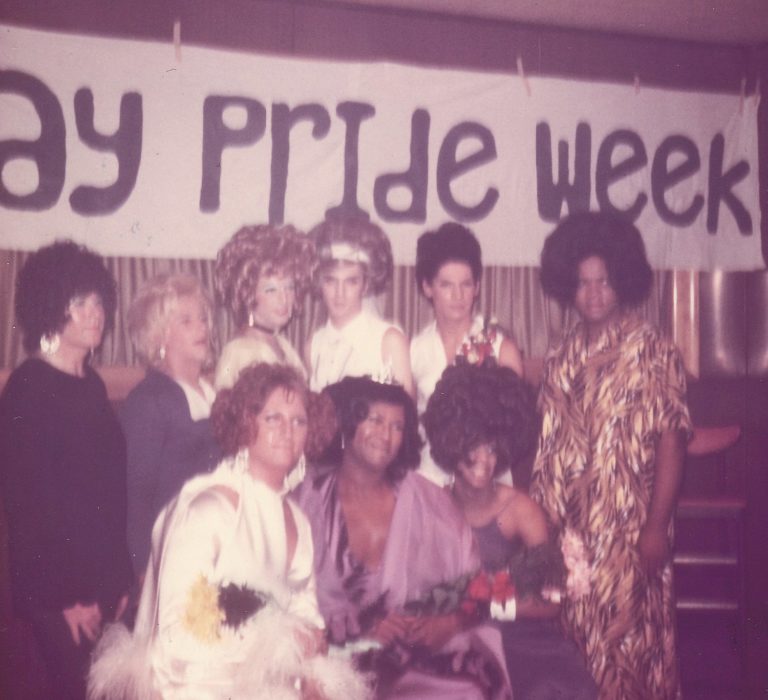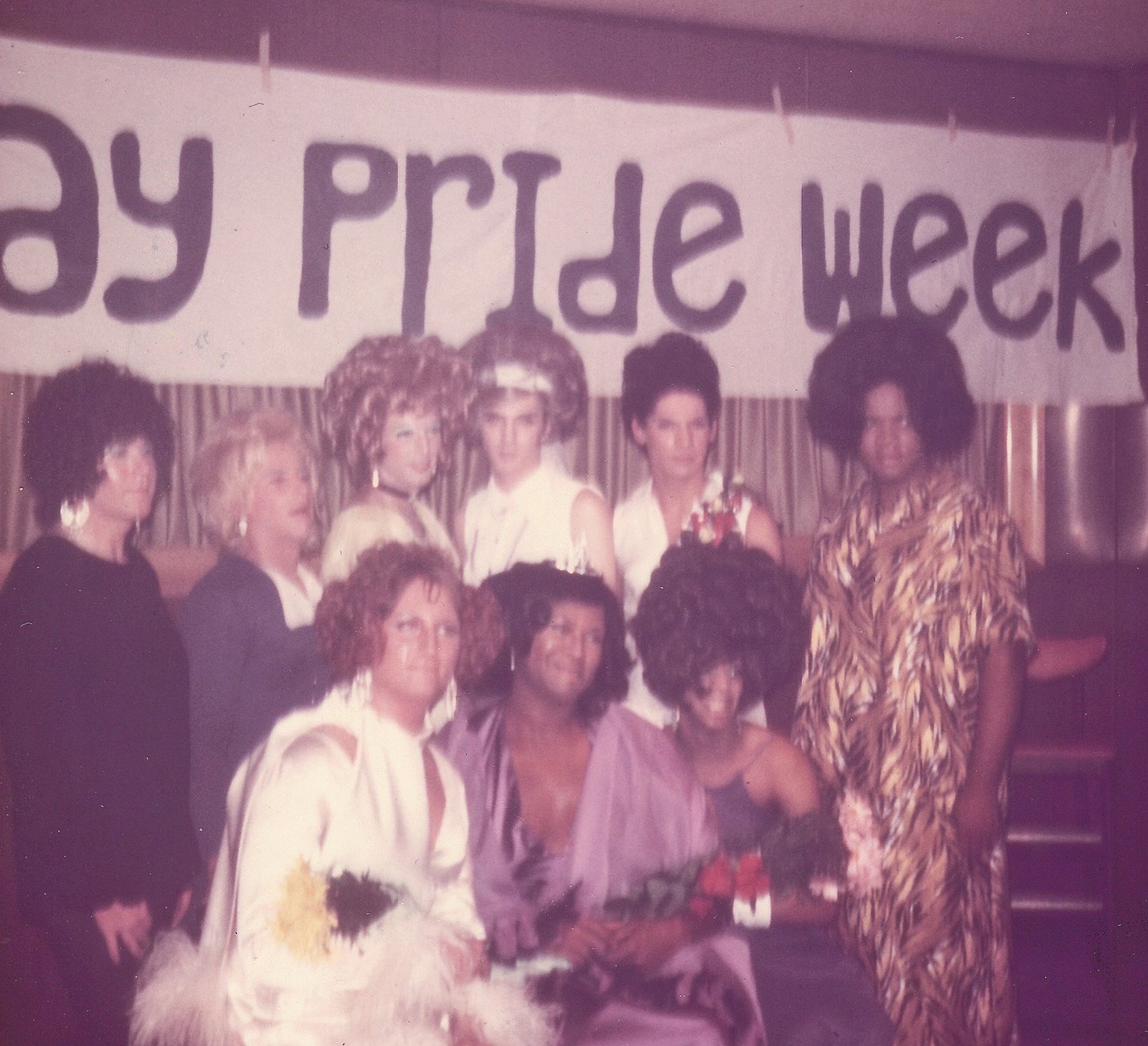

TIM RETZLOFF
The headline on the front of the Lansing State Journal on July 25, 1972, might be described as cheeky: “City’s Night Life Can Get Real ‘Gay.’” The accompanying tagline, “Perversion Downtown Varies,” carried a darker message, at once moralistic and salacious.
Beyond grouping gay life with sex work and adult entertainment, as if any of these would be worthy of contempt, the snide ogling suggests that as queer people increased their public presence after Stonewall, voyeurism, not journalism, provided the first draft of local LGBTQ history.
“Activity in Covello’s reached a social high point lately with the ‘Miss’ Capitol City beauty contest and the crowning of the ‘queen,’ Aretha, a 6-foot, 200-pound cook from a local restaurant,” the article stated.
The writer seemed bewildered that a spot welder from an area auto plant would be among the contestants. This might be interpreted as charming curiosity, except the quotes around “Miss” and “queen” carried an air of straight condescension.
If LGBTQ life in Greater Lansing remained largely hidden before Stonewall, in the 1970s it became considerably more visible. People we now understand as LGBTQ began to organize locally, to push back against prevailing attitudes that viewed queer folk as criminal, sinful and sick.
Greg Kamm pushed back.
Kamm, an officer in the Gay Liberation Movement at Michigan State University, submitted an op-ed to the LSJ in protest. The paper gave it the headline, “Gays Not Monsters.”
“Gay Liberation sponsored the drag pageant mentioned in the article,” Kamm wrote. “We did so because we recognize that different facets to homosexuality exist, running the range from the ‘drag’ queen to the football player, from the spot welder to the teacher, to the hairdresser.”
Perhaps as significant as Kamm’s critique, the Miss Capitol City contest was part of the first statewide celebration of Gay Pride Week. Aretha, with the runners-up serving as her court, road atop a Ford Galaxie to lead the first Pride parade in Detroit.
Gay activists at Michigan State were on the vanguard of taking to the streets. Formed in April 1970, the Gay Liberation Movement roused gays on campus to become politically involved.
The GLM played an instrumental role in the first ever gay march on the state Capitol, in December 1971.
GLM leader Elyse Eisenberg ran for East Lansing City Council. Don Gaudard, also a leader in GLM, ran for school board. Although both lost their races, they were among the first out candidates to run for elected office in the United States.
Gaudard was also a key instigator in pressuring the East Lansing Council to amend its policy in 1972 to prohibit bias against gay people in hiring city workers. A year later, East Lansing enacted a broader ordinance that prohibited discrimination based on sexual preference.
Meanwhile, a Gay Community Center opened in Lansing at 117 S. Pennsylvania Ave. in summer 1972, with many MSU GLM activists involved. Though it lasted barely half a year, it hosted dances and weekly spaghetti dinners, and served as home base for Lansing’s first gay newspaper, Sunflower.
The Radicalesbians registered as a student group in 1970, supposedly as an offshoot of the GLM. One historian credits its founding to a scheme to bolster gay influence on campus through multiple phantom groups that existed primarily on paper.
Besides favoring a male-centered lens for understanding the local queer past, this view seriously downplays the vibrant lesbian community being forged. By the mid-1970s, Greater Lansing was poised to become a lesbian center of gravity nationally and globally.
Trudi Sipolla, for one, became involved in a lesbian group called the Purple Perils as an undergrad and was exhilarated to discover so many women in their 20s like her. “I was in a pretty radical state of mind,” Sipolla said in a 2019 phone interview. She remembered thriving in the consciousness-raising sessions, putting feminist theories into action.
Barbara similarly embraced feminism as an entrée into the nascent lesbian movement. Soon after arriving at MSU to attend grad school in the early 1970s, Barbara began a 10-year relationship with Anne Tracy, who worked at the MSU Library.
To Barbara, Lansing area feminists were much more energized than in Ann Arbor. “The women’s movement is what pulled me in,” she said recently via Zoom. “I wanted to be part of that.”
In 1974, the Lesbian Connection began publishing, central to a coalescing of community that included the arrival of lesbian-feminist philosopher Marilyn Frye on the MSU faculty in 1974, the emergence of women’s music, and the opening of Motherwit bookstore in 1977.
Another turning point came when a homophobic landlady evicted the Lesbian Center from its original location at 547½ E. Grand River Ave. in East Lansing in early 1975. It soon moved to 427 Spring St. in Lansing, away from the university.
East Lansing was a college town. Lansing, besides being the state capital, was a factory town. Many queer residents found refuge in bars.
The Long Branch Bar, on Washington Avenue near the old Diamond Reo Truck plant, was reputed to attract lesbian clientele into the early 1970s.
The Rustic Village, which also hosted drag contests, adopted the name of its owner, Rudy Stober, in 1972. “Stober’s is such a Gay-straight Redneck mix,” Greg Kamm wrote in his diary after a visit that August. The bar was rechristened Stober’s RS Disco a few years later, but eventually it turned straight.
Covello’s began welcoming gay customers around 1972, when the Sir Club down the block kicked them out in favor of featuring topless dancers. Trammpp’s opened next door to Covello’s in the summer of 1976. Within months, the Toledo gay bar magazine Rapping Paper reported, weekend crowds at Trammpp’s could expect a 15-minute wait to get in.
As gay commercial spaces took root, so too did organizations. A 1976 issue of the Lansing Star, a local alternative newspaper, listed the MSU GLM and the Lesbian Center, along with an East Lansing support group called the Monday Night Group and Integrity, an organization for gay Episcopalians. A chapter of the Catholic gay group Dignity first met in 1978. The Lansing Association of Human Rights was established in 1979.
Particularly momentous was the formation of the Michigan Organization for Human Rights in response to the threat posed by Anita Bryant and her “Save Our Children” campaign. In June 1977, Bryant secured the repeal of a new gay rights ordinance in Dade County, Florida, and promised to take her antigay crusade to other cities.
Michiganders launched MOHR to brace for attack.
While much of the impetus came from Detroit, MOHR’s founders sought to be a truly statewide collective political force. It held its founding convention in Lansing in October 1977. At the weekend confab, Barbara found herself elected to the policy council.
“I was the sole woman in this male world,” Barbara recalled, adding that she felt “there’s got to be women willing to work with men.”
(Historian Tim Retzloff teaches LGBTQ Studies at Michigan State University.)